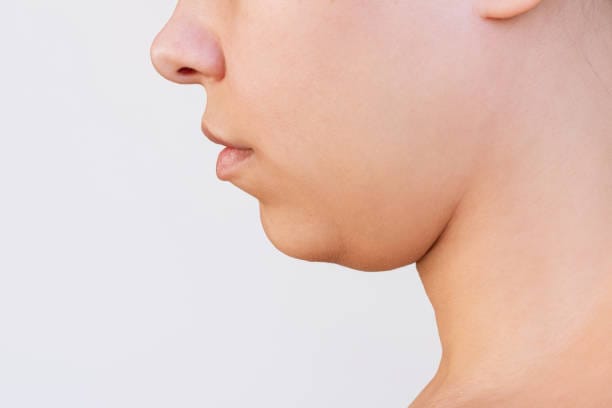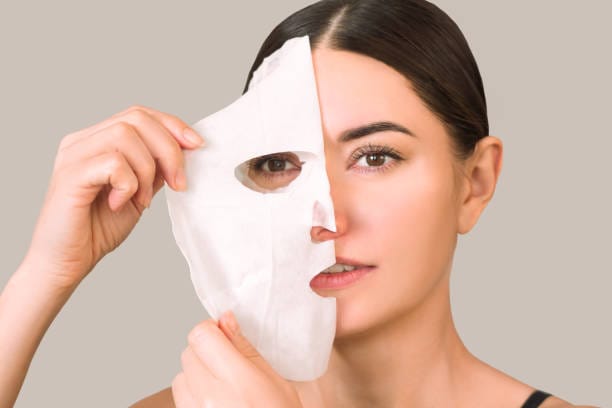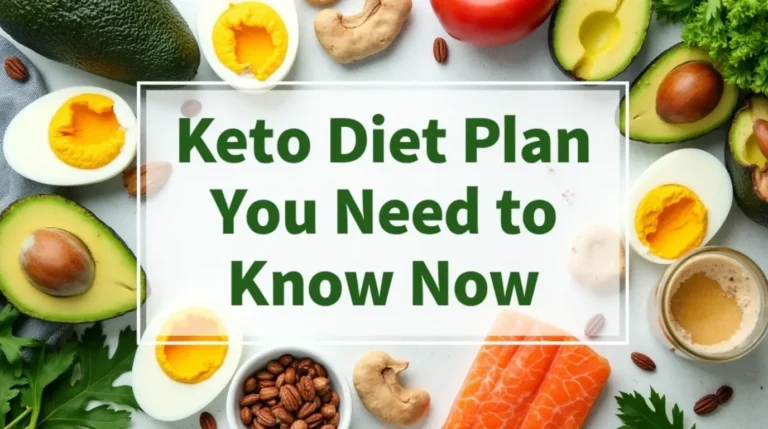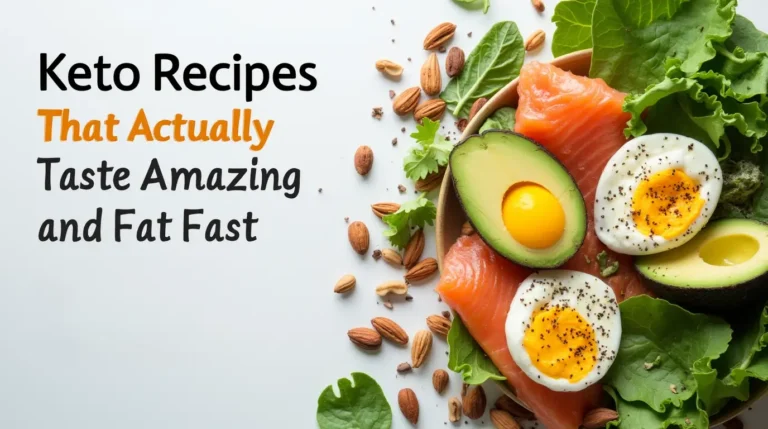We envision a world where everyone has the tools and knowledge to live a balanced, healthy, and fulfilling life. By providing reliable resources, personalized programs, and community support, we aim to be a beacon of hope for those on their health journey.
Table of Contents
Understanding Facial Weight Gain

How to Lose Weight in Your Face
Facial fat is an accumulation of subcutaneous fat within the face, influenced by a variety of genetic and lifestyle factors. Genetics play an essential role in determining an individual’s predisposition to facial fat accumulation. Some people naturally store more fat in their facial regions due to inherited traits, which can result in a rounder face or fuller cheeks. In tandem with genetics, lifestyle choices significantly affect how fat is distributed throughout the body, including the face.
Aging is another critical factor that contributes to the development of facial fat. As one ages, collagen production decreases, which can lead to sagging skin and the accumulation of fat deposits in areas such as the cheeks and chin. Additionally, hormonal changes often associated with aging, such as variations in estrogen levels, can impact the body’s ability to metabolize fats, resulting in increased face fat. learn Benefits of Walking Daily: the Truth About Walking1 Weight Loss!; This process may be exacerbated by dietary choices. A diet high in sugar and refined carbohydrates can lead to weight gain across the body, including the face, due to the rapid spikes in blood sugar that trigger fat storage.
The effects of excess facial fat extend beyond mere aesthetics. Many individuals report a negative self-image and reduced self-confidence when they are dissatisfied with their facial appearance. This can lead to psychological effects, such as social anxiety and lowered self-esteem, particularly if the individual feels that their appearance does not align with societal beauty standards. Understanding the various causes of facial fat is essential for those seeking to make positive lifestyle changes. By addressing genetic predispositions as well as adopting healthier habits, individuals can work toward reducing facial fat and promoting a more confident self-image.
Setting Realistic Goals: What to Expect
When embarking on a journey to lose weight in your face, it is crucial to establish realistic goals. These goals serve as a roadmap, helping individuals measure progress and maintain motivation throughout their weight loss journey. An understanding of what to expect can significantly influence the likelihood of achieving desired results.
Typically, facial weight loss is not an isolated event; it often correlates with overall body weight reduction. Factors such as genetics, metabolism, and individual lifestyle choices play a substantial role in determining how quickly visible changes occur. Understandably, some individuals may experience noticeable changes within a few weeks, while others may take several months before they see similar results. It’s essential to acknowledge these discrepancies to create a more personalized approach to facial weight loss.
Moreover, consistently setting small, achievable milestones can help pave the way for larger goals. Rather than aiming to “lose weight in your face” by a specific amount, consider tracking progress through visible changes, such as a more defined jawline or less puffiness in the cheeks. Using images to document progress can provide motivation and instill a sense of accomplishment as changes become evident over time.
Patience is an invaluable asset in this undertaking. Weight loss, particularly in the face, often requires time and sustained effort. Embracing healthy lifestyle choices, such as a balanced diet and regular exercise, can undoubtedly facilitate this journey. Consistency is vital; individuals should focus on incorporating these habits into their daily routines rather than seeking rapid results. Recognize that achieving an aesthetically pleasing face is a gradual process that should be approached with both dedication and care.
Dietary Changes for a Slimmer Face

Achieving a slimmer face often begins with making thoughtful dietary changes. One fundamental aspect is maintaining proper hydration. Drinking an adequate amount of water throughout the day can assist in flushing out toxins, reducing water retention, and promoting a more defined facial structure. Aim for at least eight 8-ounce glasses daily, adjusting based on your activity level and climate.
In addition to hydration, adopting a balanced diet plays a crucial role in overall fat loss, including in the face. A diet rich in fruits, vegetables, lean proteins, and whole grains can facilitate healthy weight loss. Foods high in dietary fiber, like leafy greens and whole grains, aid digestion and reduce bloating, potentially contributing to a slimmer appearance. Incorporating lean proteins, such as chicken, fish, and legumes, not only helps build muscle but also promotes satiety, preventing overeating.
Certain foods are particularly effective in promoting fat loss in the face. Incorporating sources of omega-3 fatty acids, such as fatty fish and walnuts, can help reduce inflammation, further aiding in a leaner visage. Foods high in antioxidants, including berries and nuts, also play a significant role in combating free radicals and supporting overall skin health.
Particular nutrients such as potassium and magnesium can help manage sodium levels, subsequently controlling facial puffiness. Foods like bananas, sweet potatoes, and spinach are rich in these nutrients. On the other hand, managing your intake of salt and sugar is equally important. Excessive consumption of salty foods can lead to water retention, making the face appear fuller. Similarly, high sugar intake can cause weight gain and negatively affect overall health. Transitioning to natural sweeteners or reducing processed sugars can be beneficial.
Effective Exercises to Tone Facial Muscles
Engaging in effective exercises can significantly contribute to toning facial muscles, ultimately aiding in achieving a slimmer facial appearance. One popular approach is the practice of facial yoga, which incorporates various stretches and poses designed to strengthen the muscles of the face. These exercises not only promote muscle firmness but also enhance blood circulation, leading to a healthier and more vibrant complexion.
One of the most effective facial exercises includes the “cheek lift,” where individuals can simulate a smile while placing their fingers on the upper cheeks for support. By pushing the cheeks upwards against the resistance of the fingers, this routine works the muscles around the cheeks, resulting in increased muscle tone. Another beneficial exercise is the “forehead smoothing” technique, which involves gently pulling the skin on the forehead while squinting the eyes. This simple movement targets the forehead muscles while eliminating fine lines and wrinkles.
In addition to facial yoga, resistance exercises can also play a crucial role in toning facial muscles. These exercises can be performed using resistance bands or even by using fingers to create tension in various facial areas. For instance, the “jaw resistance” exercise entails placing a fist under the chin and attempting to lower the jaw while providing resistance with the hand. This method not only strengthens the jawline but also aids in contouring the lower face.
Consistency is key when it comes to reaping the benefits of these exercises. A dedicated routine, practiced several times a week, can ensure that facial muscles remain toned and firm. Additionally, integrating these workouts with proper hydration and a balanced diet can further enhance the results, leading to a more contoured facial appearance. By prioritizing these effective exercises, individuals can work towards a slimmer face and improved muscle definition.
The Importance of Overall Weight Loss

Losing weight in the face is often a reflection of broader body weight reduction. It is crucial to recognize that targeted fat loss, particularly in specific areas such as the face, is challenging. Effective overall weight loss strategies not only contribute to a healthier physique but also enhance facial appearance significantly. Comprehensive approaches that include cardio exercises, strength training, and lifestyle changes can be instrumental in achieving this goal.
Cardiovascular exercises, such as jogging, cycling, or swimming, play a pivotal role in overall fat loss. These activities help to elevate heart rates and boost caloric expenditure, facilitating the shedding of excess body weight. Aim for at least 150 minutes of moderate-intensity or 75 minutes of high-intensity cardio each week. This consistent activity not only helps in weight loss but also improves cardiovascular health and stamina, fostering a more energetic lifestyle.
In addition to cardio, incorporating strength training into your fitness regimen is essential. Resistance exercises, including weight lifting or bodyweight exercises, help build muscle mass, which can increase the metabolic rate. A higher metabolic rate means more calories burned, even at rest. Experts recommend engaging in strength training at least twice a week, targeting all major muscle groups to ensure balanced fitness and improved body composition.
Furthermore, lifestyle changes such as optimizing nutrition and ensuring adequate hydration can significantly impact overall weight management. A balanced diet rich in whole foods, vegetables, lean proteins, and healthy fats can promote satiety and reduce cravings. Additionally, staying hydrated aids in digestion and can have a positive effect on skin appearance, contributing to a healthier visage.
Through a combination of these strategies, individuals can achieve significant weight loss, which will subsequently lead to a leaner face and enhanced facial features. Consistency in these habits lays the foundation for sustainable results, promoting a healthier lifestyle overall.
Hydration and Skin Health: The Connection to Weight Loss
Maintaining proper hydration is vital for overall health, and it plays a particularly influential role in skin health and weight loss. Adequate water intake supports skin elasticity, helping to prevent sagging and puffiness that can contribute to an unhealthy appearance. When the body is sufficiently hydrated, it can effectively flush out toxins, reducing bloating in the facial area and creating a more toned look.
For optimal hydration, it is often recommended to consume at least eight 8-ounce glasses of water daily, although individual needs may vary based on factors such as activity level and climate. Consistently meeting this goal can significantly enhance metabolic processes, which may help with weight loss. When the body is well-hydrated, it is better equipped to regulate appetite and prevent overeating. Furthermore, drinking water can help differentiate between hunger and thirst, allowing for more mindful eating practices.
Incorporating hydrating foods into your diet can also make a substantial difference. Foods such as cucumbers, watermelon, celery, and oranges are excellent options that contribute to daily hydration while offering essential vitamins and minerals. Additionally, herbal teas and broths are excellent choices for increasing fluid intake without added sugars or empty calories. By focusing on hydration, individuals can not only improve their skin’s appearance but also support their overall weight loss efforts.
In conclusion, the connection between hydration, skin health, and weight loss cannot be overstated. By prioritizing water intake and integrating hydrating foods into everyday meals, one can foster better skin elasticity and reduce facial puffiness, thus complementing their weight loss journey effectively.
Lifestyle Changes for a Flatter Face
Achieving a slimmer face often necessitates a comprehensive approach that incorporates various lifestyle changes. A crucial factor contributing to facial weight gain or bloating is stress. Elevated stress levels can result in increased cortisol production, a hormone associated with weight gain, particularly in the facial region. Therefore, implementing effective stress management techniques, such as mindfulness meditation, yoga, or regular physical activity, can be immensely beneficial. These methods help in regulating cortisol levels, promoting relaxation, and enhancing overall well-being.
Moreover, the significance of sleep cannot be overstated. Quality sleep plays an essential role in weight management and overall health. Insufficient sleep leads to hormonal imbalances, potentially resulting in increased appetite and weight gain. Aiming for seven to nine hours of quality sleep per night can help mitigate these effects. Additionally, establishing a consistent sleep schedule, creating a comfortable sleep environment, and practicing relaxation techniques before bedtime can further improve sleep quality.
Certain habits can also contribute to an inflated appearance and should be addressed to achieve a flatter face. One such habit is excessive alcohol consumption; alcohol can lead to dehydration and inflammation, leading to facial bloating. Reducing alcohol intake can minimize these effects, contributing to a leaner and more toned facial appearance. Furthermore, it is essential to maintain a balanced diet, as certain high-sodium foods can exacerbate water retention in the face. Incorporating whole foods such as fruits, vegetables, and lean proteins can not only promote weight loss but also enhance skin health.
Incorporating these lifestyle changes can significantly impact the appearance of a fuller face. By addressing stress, prioritizing quality sleep, and altering detrimental habits, individuals can take significant strides toward achieving a slimmer and healthier overall look.
The Role of Skincare in Facial Slimming

When considering the quest for a slimmer face, it is essential to recognize the significant impact that skincare can have on overall facial appearance. Proper skincare not only enhances skin texture and tone but can also create the illusion of a more sculpted face. To achieve these benefits, adopting a consistent skincare regimen is crucial.
The first step in any skincare routine aimed at facial slimming is cleansing. A gentle cleanser can help remove impurities and excess oils that may lead to a puffy appearance. Incorporating an exfoliating product one to two times a week can further aid in this process by sloughing off dead skin cells, promoting cell turnover, and ensuring a polished look. A well-exfoliated face often appears brighter, giving the illusion of more defined features.
Next, hydration plays a pivotal role in maintaining healthy skin. Opting for a lightweight, oil-free moisturizer can help reduce water retention, which is often responsible for a swollen look. Additionally, incorporating ingredients such as hyaluronic acid can attract moisture to the skin without contributing to oiliness, thereby enhancing elasticity and promoting a youthful glow.
Facial serums can also be valuable in this pursuit. Formulas containing caffeine are particularly effective in reducing puffiness, as caffeine constricts blood vessels and can aid in diminishing dark circles and swelling beneath the eyes. Furthermore, serums infused with antioxidants can provide additional support by protecting the skin from environmental stressors, ultimately contributing to a firmer appearance.
Moreover, treatments like facial massage or the use of jade rollers can stimulate circulation and lymphatic drainage, further reducing puffiness and promoting a more contoured look. By integrating these practices and products into your daily routine, you can significantly enhance your skin’s overall appearance, making your face seem slimmer and more vibrant.
Surgical Options and Non-Invasive Treatments
For individuals looking to achieve a more defined facial structure, several surgical and non-invasive treatments are available. These options cater to various aesthetic goals and preferences, providing different degrees of immediacy and invasiveness.
One of the most common surgical options is facial liposuction. This procedure involves the removal of excess fat from specific areas of the face, such as the chin, cheeks, or neck, leading to a slimmer appearance. While the results can be significant, it is essential to consider the recovery period, potential complications, and the skill of the surgeon. Patients often report high satisfaction when the surgery is performed by experienced professionals, but risks such as swelling, bruising, or scarring are part of the procedure.
Another popular surgical option is buccal fat removal, which entails excising the buccal fat pads located in the lower cheeks. This technique enhances facial contour by reducing the fullness in the cheeks, giving a more sculpted look. Similar to liposuction, buccal fat removal requires careful evaluation of the patient’s overall facial structure, as over-reduction can lead to an undesirable appearance.
For those who prefer non-invasive treatments, options such as injectable fillers and Kybella offer effective alternatives. Fillers can add volume to specific areas, enhancing facial balance, while Kybella specifically targets fat cells beneath the chin, gradually reducing its appearance. Non-invasive treatments typically present fewer risks and require minimal downtime, making them appealing for many individuals.
Ultimately, selecting the appropriate approach hinges on the desired results and personal preferences. Consulting with a qualified cosmetic professional is crucial for understanding the nuances of each treatment, allowing patients to make informed decisions tailored to their aesthetic goals.








